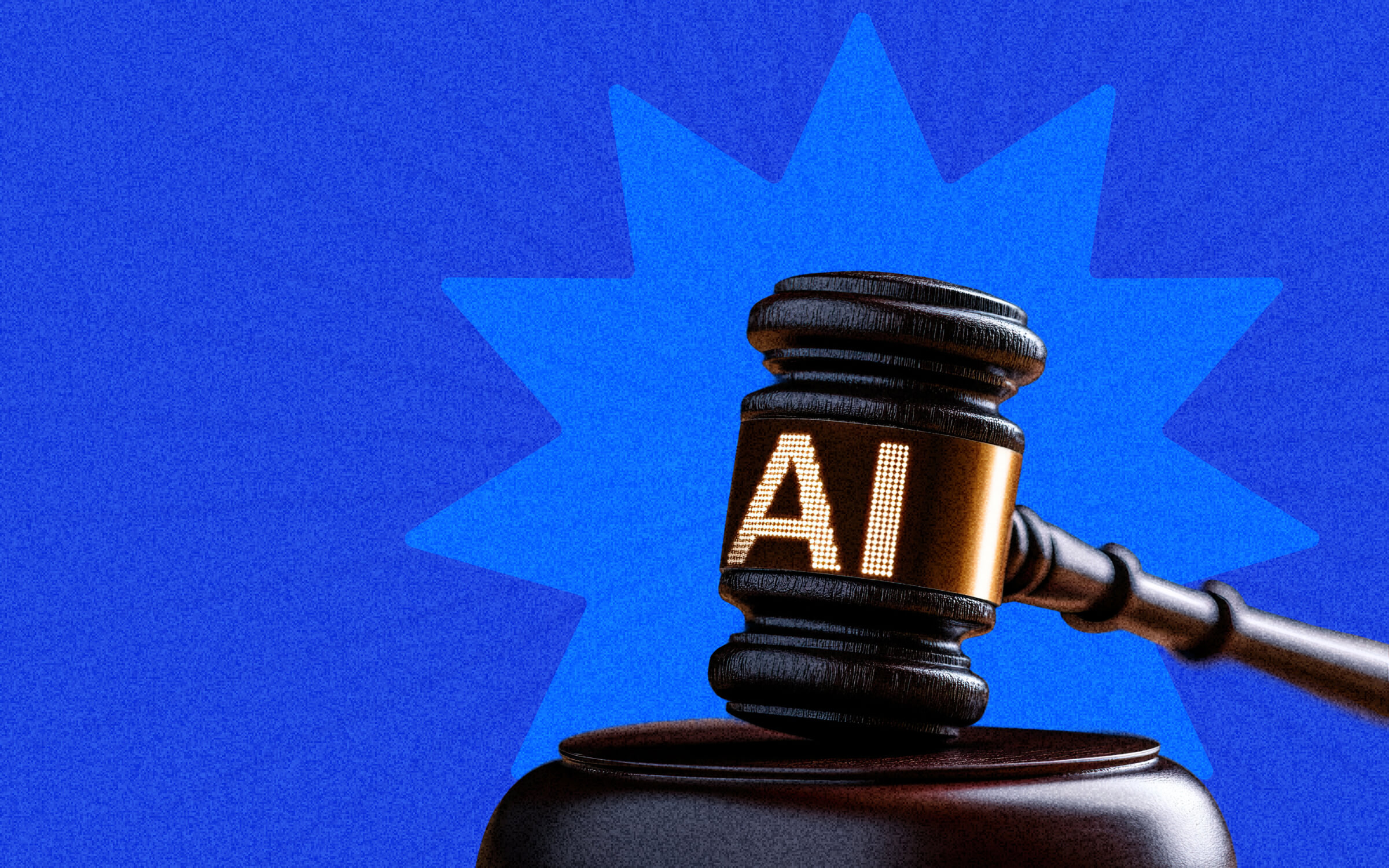You’re likely hearing more buzz in your network about cryptocurrency investments, blockchain, NFTs and the metaverse. These are all trends that are a part of web3 — or the next iteration of how people will interact with the internet.
If you feel like your understanding of web3 is murky, you’re not alone. The best way to understand Web 3.0 is to dive into the iterations of internet technology preceding it.
- Web 1.0, the early internet in the 1990s, was viewed as a way to democratize information. Web 1.0 was made up of static web pages and few interactive elements.
- Web 2.0 is the modern internet we have today. This version of the internet is driven by user-generated content. Social media, blogging, podcasting, uploading videos to YouTube and writing reviews online are all things made possible by the technologies that underlie Web 2.0. That includes platforms like Google, Facebook and YouTube.
- Web 3.0, or web3, refers to a decentralized internet that many speculate is on the horizon. Instead of companies providing the infrastructure, infrastructure would be decentralized and give more autonomy to individual users.
High-level concepts like NFTs and DeFi are all related, which makes knowing the basics of the decentralized web so important for companies navigating the shift.
Senior Executive Media’s glossary is designed to help you learn the most important foundational concepts.
Did we miss any terms? Quibble with any definitions here? Send us an email to help us build our glossary and keep our definitions up-to-date.
Glossary of Terms
Augmented reality (AR) — A simulated digital experience overlaid on the real world. Augmented Reality or AR is where virtual reality and reality meet. Augmented Reality requires a device like a headset, although modern smartphones also have some AR capabilities. Microsoft HoloLens, for example, allows remote technicians at manufacturing firms to direct on-the-ground staff how to fix problems. Most optimistic visions of a metaverse propose that it would be accessible using AR.
See also: virtual reality, metaverse.
Bitcoin — The first cryptocurrency and biggest digital currency by market cap. Bitcoin was theorized in a 2008 white paper written by the pseudonymous researcher Satoshi Nakamoto. The software underlying Bitcoin was released in 2009. Since then, its price has fluctuated dramatically reaching a high of $68,990.90 in November 2021. Bitcoin is created through a process called mining. The computer systems used to mine and transact Bitcoin have a large environmental impact — equivalent to a small country like Sweden, Malaysia or Finland.
See also: cryptocurrency.
Blockchain — A decentralized, digitally-distributed, often public ledger that records data. Blockchain is often used in cryptocurrency transactions to maintain a secure and decentralized record of transactions. However, traditional technology players are looking for ways to integrate blockchain. Individual records are referred to as “blocks,” which have limited storage capacity. When a block can no longer hold additional data, another block is appended to it, forming a chain. Individual blocks are linked using cryptography (powerful algorithms that encode data in ways that are hard to reverse engineer), after which the block cannot be edited or deleted. This helps create security for tracking transactions.
Unlike a traditional financial institution, a blockchain isn’t kept by one central record keeper. Instead, the whole blockchain is stored on every computer in the entire network which collectively verifies its accuracy and integrity.
Coin — Generic term for one unit of a cryptocurrency. A digital coin.
Crypto wallet — An account, application, service or device for storing, trading or spending cryptocurrencies. A “hot wallet” is a crypto wallet that’s connected to the internet, leaving it vulnerable to certain kinds of scams, fraud and other attacks. A “cold wallet” is a crypto wallet that is not connected to the internet, making it safer for long-term storage of cryptocurrencies. The publicly-traded company Coinbase offers one of the most popular crypto wallets.
Cryptocurrency — Any form of digital currency that uses cryptography, an encryption process, to secure transactions making counterfeiting or double-spending almost impossible. Unlike regular currencies, they are rarely issued by a central bank or other authority. Most popular cryptocurrencies — like Bitcoin and Ethereum — use a blockchain as a record of transactions. Less popular cryptocurrencies are often called “altcoins.”
See also: Bitcoin, Ethereum, Polygon.
Decentralized Autonomous Organization (DAO) — A decentralized group, normally with a specific function, that is run by its members without a central authority. DAOs take some of the features of cryptocurrencies — decentralized, no central leadership, defined using computer code — and apply them to the organization of a group of people. Members of DAOs are generally issued “governance tokens” with which they can vote on what the project does and how it does it. One famous DAO was ConstitutionDAO, a group that raised $47 million to try and buy a copy of the US Constitution.
Decentralized finance (DeFi) — A catchall term for cryptocurrency-enabled, peer-to-peer financial services. With various cryptocurrency platforms, people can take out loans, earn interest on their deposits and trade crypto-derivatives without a bank or broker as a middleman.
Ethereum (ETH) — A decentralized blockchain for the Ether cryptocurrency, and the second most popular cryptocurrency by market cap. The Ethereum Blockchain supports “smart contracts,” or computer programs that occur when certain predefined conditions are met, enabling more functionality than the Bitcoin Blockchain offers. For example, an NFT on the Ethereum blockchain can automatically pay a royalty to the original artist when it is sold.
See also: Bitcoin, smart contracts.
Gas — The cryptocurrency paid to the Ethereum network to verify transactions. Gas has to be paid for every transaction involving Ether. The amount required fluctuates based on demand.
See also: Ethereum.
Initial Coin Offering (ICO) — An event where a company raises money by selling a new cryptocurrency. ICOs are generally unregulated, and pump-and-dump scams have been an issue in the past.
Metaverse — A persistent virtual world with a digital economy, generally accessed by virtual reality (VR) or augmented reality (AR) technology. Presently, the metaverse is more of a collection of related ideas than a fully realized concept.
Most optimistic views envision one universal metaverse, or virtual world, that can be accessed by anyone from anywhere at any time. However, others speculate there will be multiple separate company-run metaverses that don’t interoperate. For example, both Meta and Microsoft are investing heavily in creating competing metaverses, rather than collaborating to build a universal one.
Mining — The process of creating new units of cryptocurrency that can be introduced to the marketplace. Mining is used by Bitcoin, Ethereum and some other cryptocurrencies that deploy a “proof of work” algorithm to verify transactions without a centralized authority.
Mining works slightly differently with different cryptocurrencies. With Bitcoin, miners compete to be the first to solve an increasingly difficult cryptographic puzzle. Once a miner finds the correct solution, a block of transactions is added to the end of the blockchain and the miner that solved it is rewarded with a fixed amount of Bitcoin. The process then repeats.
See also: proof of work, proof of stake.
Non fungible tokens (NFTs) — Unique tokens, typically on the Ethereum blockchain, although other blockchains are sometimes used. NFTs are often used to sell digital collectibles and digital artwork, though an NFT is not itself the collectible or artwork. Instead, it is a token that is linked to a permanent block on a blockchain that contains a web address for the collectible or artwork.
From a legal perspective, NFTs don’t generally involve the transfer of copyright or reproduction rights. For example, the Associated Press has sold NFTs of some of its most famous photographs. However, the original photographers retain the copyright to the works. The buyers just own the token that links to a digital copy of the original artwork.
Polygon — A “sidechain” or extension of the Ethereum blockchain that allows for faster transactions and lower fees. Polygon uses a “proof of stake” algorithm instead of a “proof of work” algorithm (like Bitcoin and Ethereum) which enables more transactions per second, and thus faster and cheaper transactions overall with less environmental impact. Polygon has been considered for NFT programs by groups like the Associated Press and the World Wildlife Fund, although both have faced heavy criticism.
Proof of stake (PoS) — A method used to validate cryptocurrency transactions. Proof of stake enables cryptocurrency holders to stake coins and run a “validator node” (a computer connected to the network running specialized software) to create and verify blocks being added to a blockchain. Proof of stake is a more energy-efficient alternative to proof of work.
When a new block is to be added, an algorithm selects a validator node to perform the calculations to add a new block. If it successfully completes the process, the node is rewarded with more cryptocurrency. If it fails or otherwise doesn’t correctly validate the transactions, some or all of the staked coins are lost.
Proof of work (PoW) — A consensus method used to validate cryptocurrency transactions. Proof of Work is the method of validation used by Bitcoin and Ethereum (although Ethereum is planning to transition to proof of stake). Proof-of-work miners compete to be the first to solve a complex cryptographic equation. The powerful, energy-hungry computers necessary to mine profitably are what have created cryptocurrency’s huge electricity demand and environmental impact.
See also: mining.
Smart contract — Computer programs stored on a blockchain that automatically run when predetermined conditions are met. For example, a smart contract can trigger when a token is sold, staked, transferred to a wallet or simply because it is a certain time or date. Smart contracts are a key feature of the Ethereum blockchain and allow for the creation of decentralized finance (DeFi) and other applications.
See also: DeFi.
Stablecoin — A cryptocurrency with its price pegged to a reserve asset, such as the U.S. dollar or gold. Stablecoins are designed to be less volatile than other cryptocurrencies. For example, USD Coin (USDC) is pegged at a 1:1 exchange rate to the U.S. dollar and all USDC in circulation are backed by real-world dollar assets.
Token — A generic term for one unit of a cryptocurrency.
See also: coin.
Virtual reality (VR) — A simulated experience accessed using virtual reality goggles. Today, virtual reality or VR is mostly used for video gaming. However, most optimistic visions of a metaverse propose that it would be accessible in VR for a more immersive experience.
See also: Augmented Reality, Metaverse.
Web 1.0 — The earliest version of the internet. Web 1.0 is the read-only web with static pages that people could visit, but not interact with. Web 1.0 was named after the concept of Web 2.0 was developed so it is, by necessity, defined as things that aren’t Web 2.0.
Web 2.0 — The modern version of the world wide web. Web 2.0 is the social web, which is driven by user-generated content. Social media, blogging, podcasting, uploading videos to YouTube and writing reviews online are all things made possible by the technologies that underlie Web 2.0.
Web 2.0 websites are dynamic and interactive. People can create accounts or see content specifically intended for them. The vast majority of popular websites fit under the broad umbrella of Web 2.0.
Web3 — The future of the world wide web, at least theoretically. Web3 (sometimes styled as Web 3 or Web 3.0) is the umbrella term for the series of technologies that underlie a decentralized internet. While web3 is a big buzzword today, the concept is still ill-defined, at least outside of a handful of very specific projects. Web3, for example, is not the metaverse, though some people’s visions for the Metaverse could be built using web3 technologies.






